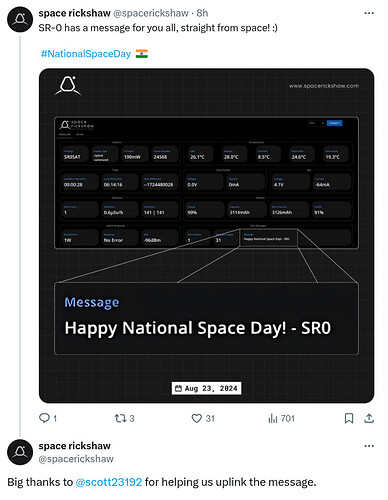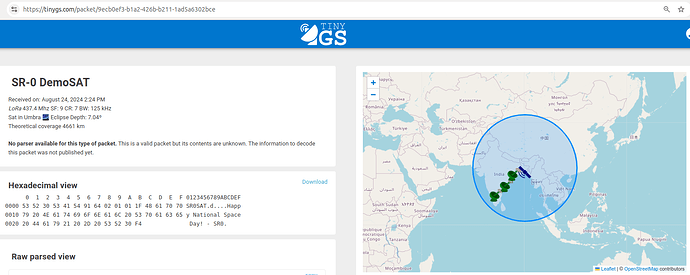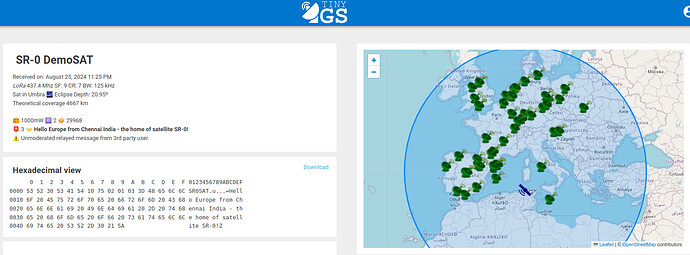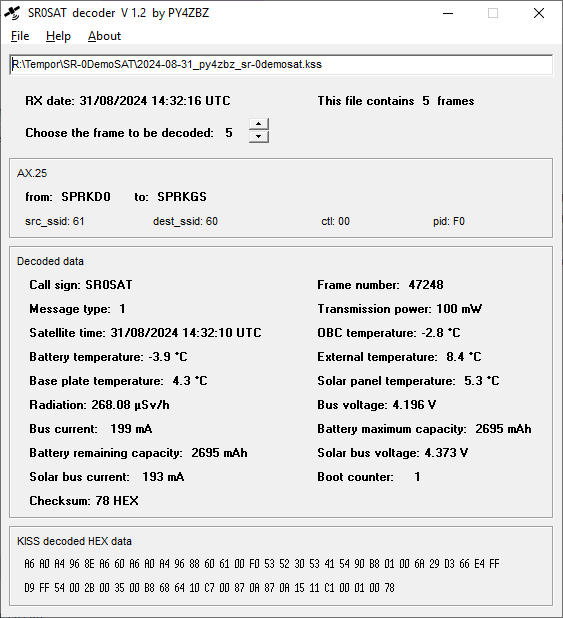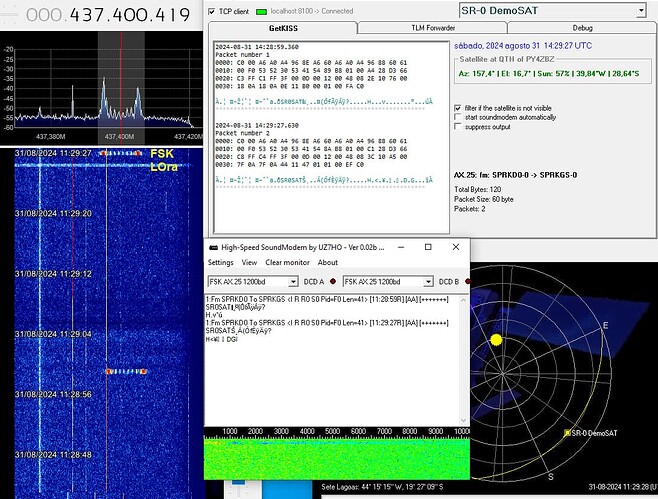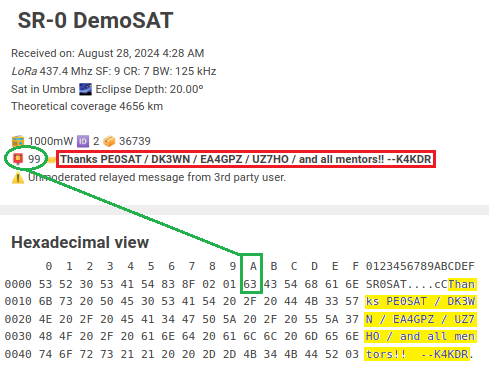Many thanks!
Don’t know about actual TX power, but I’ve ordered a long over-due 525 MHz watt meter, so I should have more info on that next week.
I guess this is true of any RF amp, but the documentation does mention that output is proportional to input power (as well as DC electrical power) to the amp. So, to squeak out just a LITTLE more power, I’m using a Nucleo STM32WL55JC2 for this at the 22 dbm TX level. Just about everything else I have has a max TX power on paper of 20 dbm.
I’m sure that the SR-0 Team is as anxious as I am for more stations to be uplink capable. In fact, several to-do items on their Ground Station UI were finished today - it was great to see many of the known checklist items be completed.
So, after a VERY few more to-do’s, I’m guessing that they will post the details.
In summary, there will be multiple ways to uplink commands to SR-0, depending on the hardware available and the operator’s comfort level. The basic & I’m sure most commonly used commands will be:
==store a message in a particular mailbox slot #
==request downlink of the message from a particular mailbox slot # (specifying that the downlink be either LoRa or FSK and either using the 100 mW radio or the 1-watt radio)
In no particular order, an operator could:
#1: manually create commands following the uplink command syntax (a few comma-separated fields) ended w/ a ‘|’ character + a checksum (easily available via a web calculator URL) & transmit the combined payload through the tinyGS web GUI or any interface that they might have on-hand to transmit a given array of hex bytes out their LoRa device
#2: use the SR-0 Team’s Ground Station UI to assemble the command + checksum and copy/paste the resulting hex for TX via any of the same methods mentioned above
#3: run a fairly standard RadioLib-based Arduino sketch (provided by the SR-0 Team) to interface to your LoRa device & then connect via serial directly from the SR-0 Team’s Ground Station UI… then you can transmit (or receive) directly within the UI. That is what I’m doing. Glad to help anyone who needs a hand running that Arduino sketch on their particular microcontroller… I’ve connected to a good percentage of the most commonly used LoRa-capable microcontrollers so I already have the settings.
… about the only other thing to stress is that while the Team’s Ground Station UI is absolutely setup for both RX & TX, if you’re using a cheap solid-state RF amp like I am, you are a TX-only station and will depend on the kind contributions of the decodes received by others to know what’s being downlinked. I have the good fortune of having a remote connection to super-station N6RFM which receives everything that SR-0 even THINKS about transmitting, so that’s very helpful. I suppose one day I should man-up and build a relay scheme to bypass this amp when not transmitting. But I need to walk before I run. Hope that’s helpful!
A final note considering your location… if I have any luck with tonight’s tests, you may wish to monitor SR-0’s downlink around August 25, 2024 23:25:15 UTC… no guarantees but one of my to-do’s for tonight’s U.S. passes is to try to schedule a mailbox message downlink (via LoRa) at that time when the footprint is over a portion of that region.

